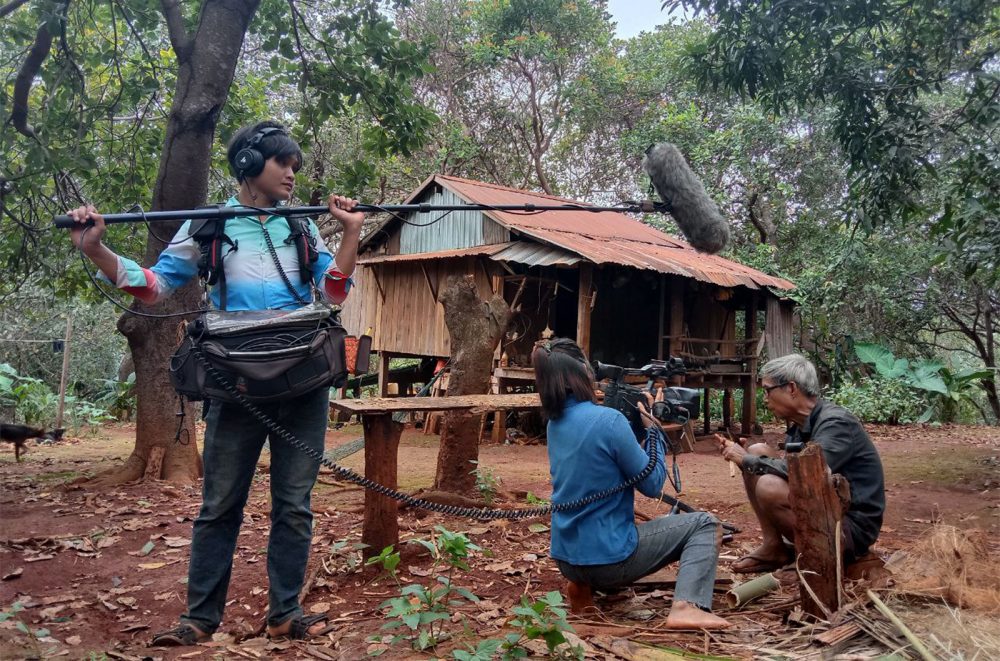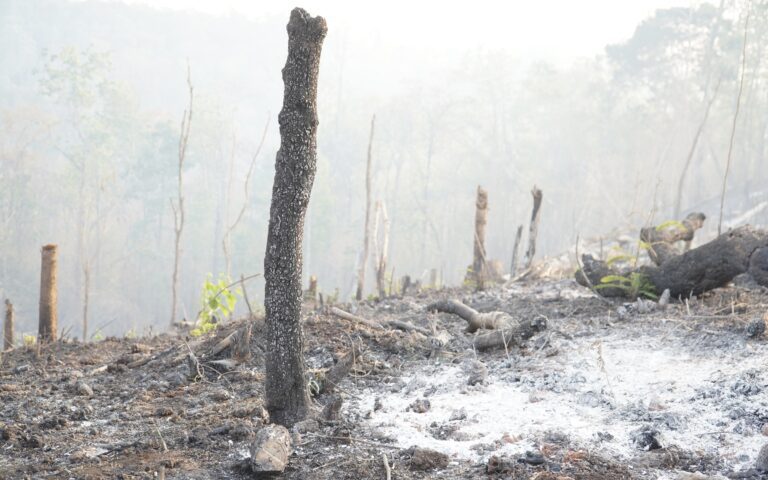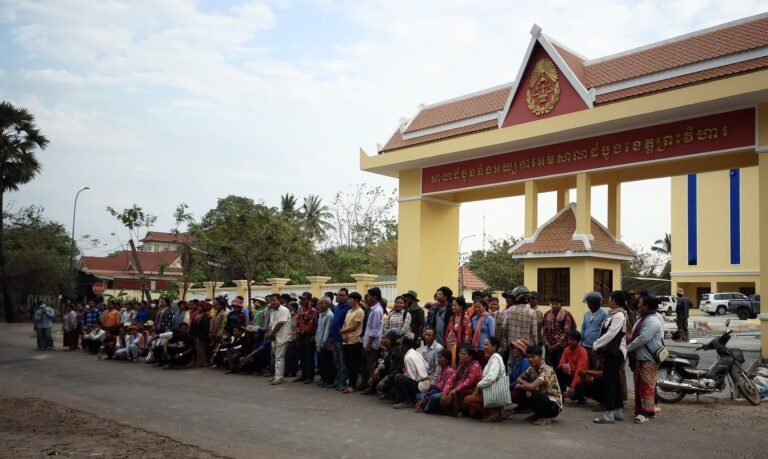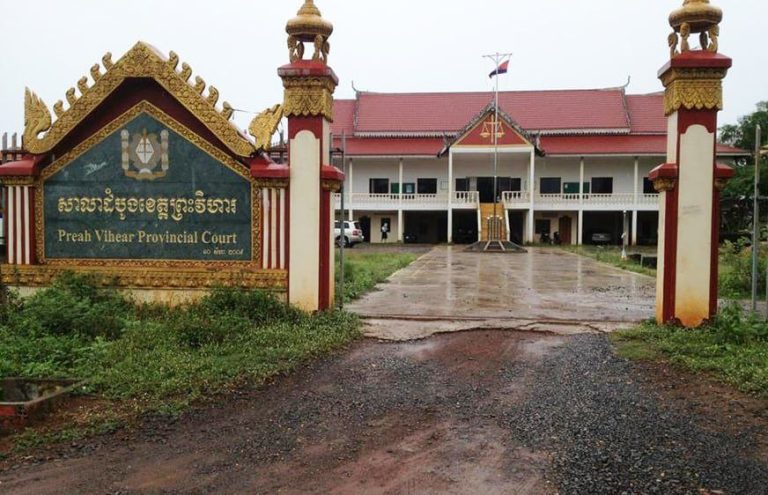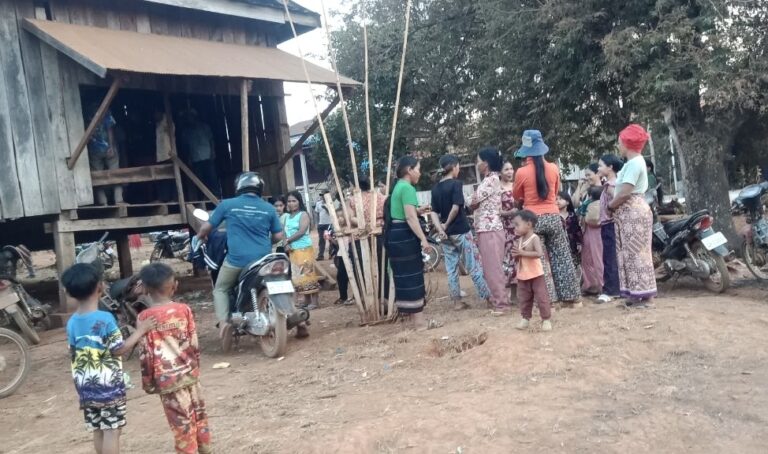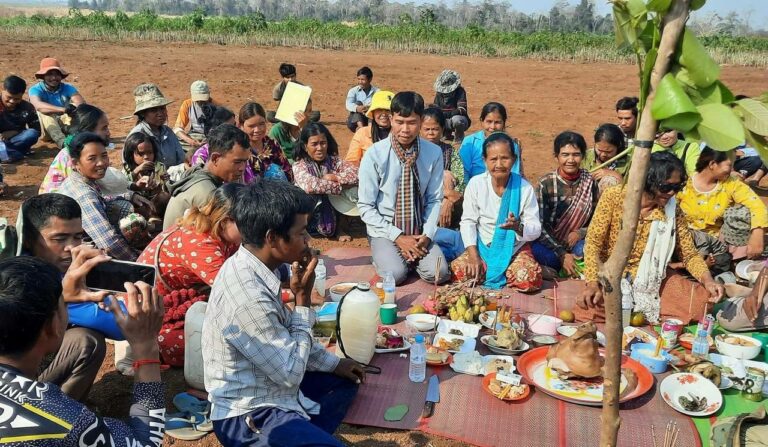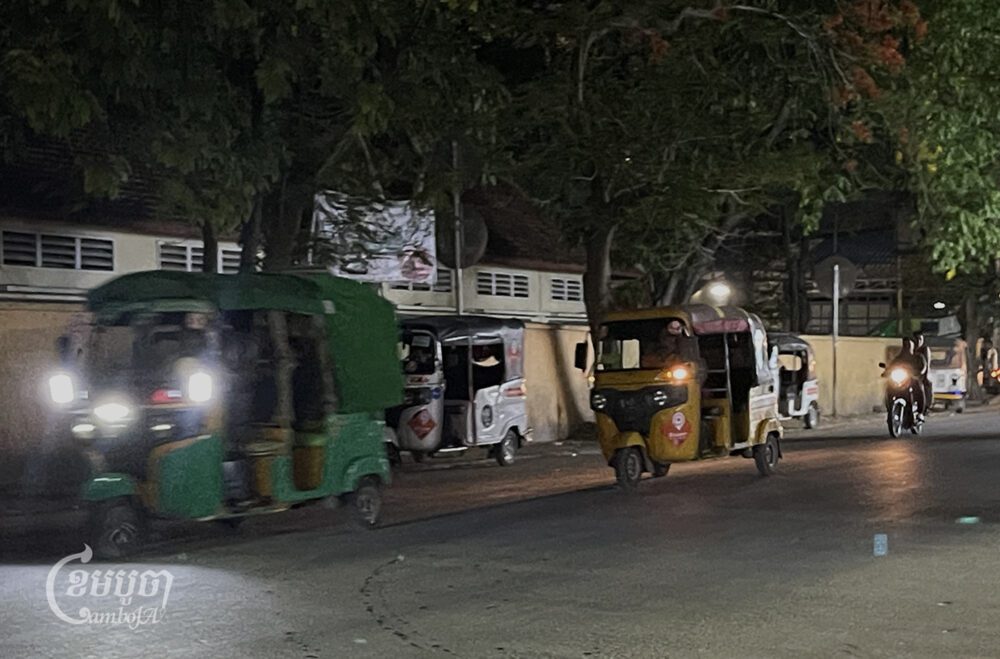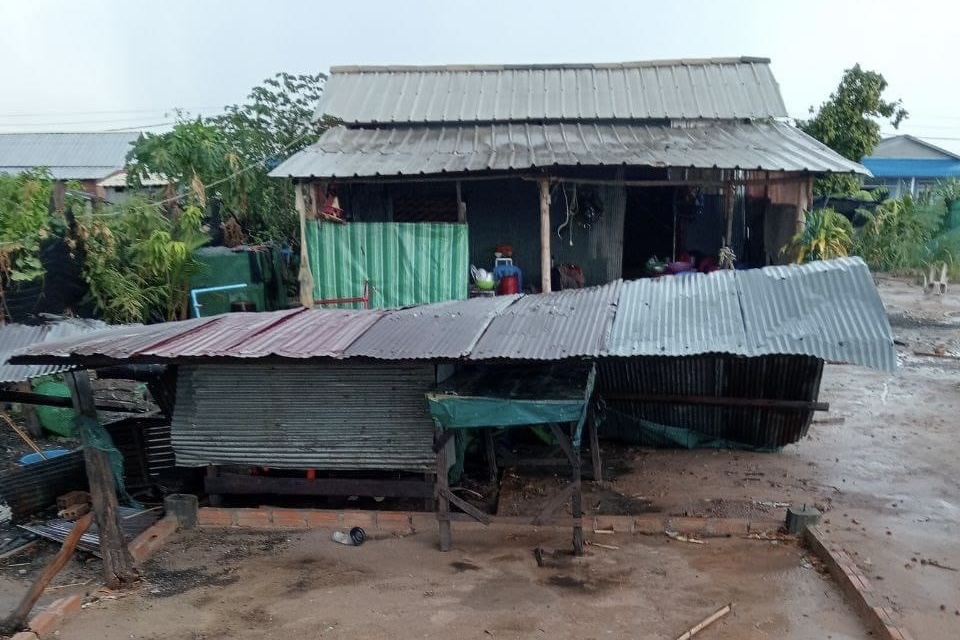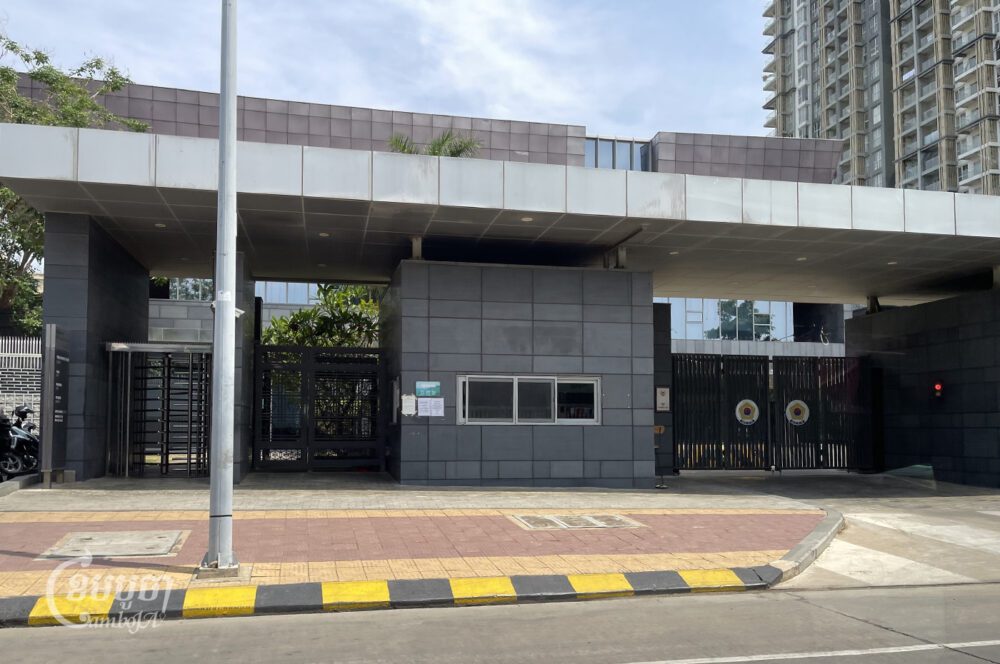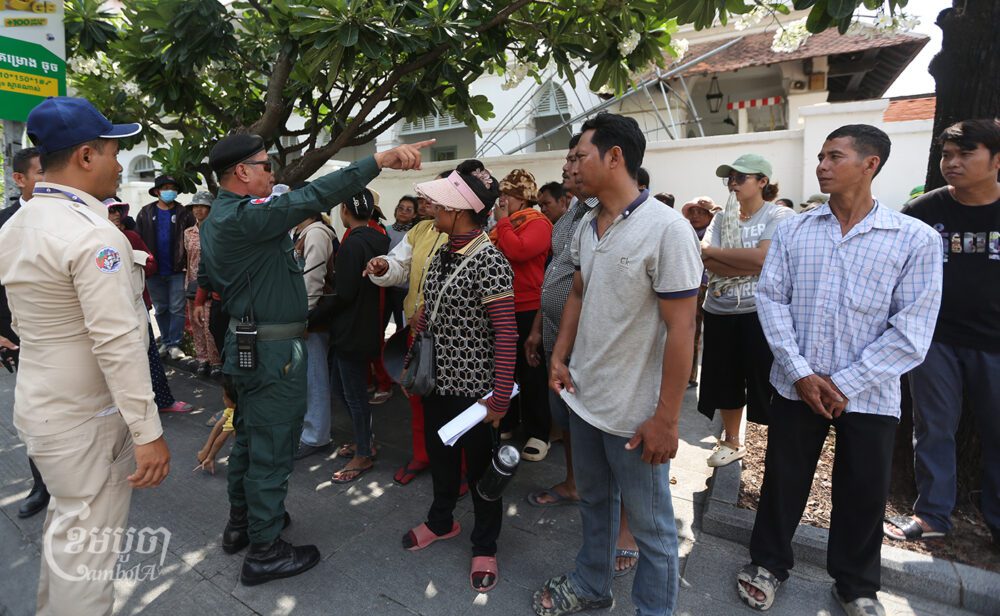For Chen Socheata, a 19-year-old from Ratanakiri’s Banlung city, filmmaking has become a critical way for her to celebrate and preserve her Tumpuon culture. Since enrolling in a filmmaking program run by Bophana Center last year, she’s already produced one short documentary with several more ideas in the works.
“I see a lot of factors that could cause my indigenous culture to be lost in the future,” Socheata said in a recent interview, explaining why she made her first film about the Tro Khlouk, a two-string vertical fiddle with a gourd body.
“Today’s youth do not know the Tro Khlouk and do not know their culture. In the demon crushing ceremony, for instance, if there is no music or Tro Khlouk, the devil will enter into the human body and can make people sicker.”
Socheata is one of 30 Tumpuon, Jarai, Kreung, Brao, and Kachak students attending a yearlong program aimed at establishing an indigenous audiovisual archive. Now in its fifth batch, the latest cohort of Bophana students attend classes in Ratanakiri four days a week and are taught every step of how to produce documentaries, from coming up with ideas, to interviewing sources, to filming, scripting, and editing.
For Socheata, the program has given her a unique tool set for capturing key issues in her community that are often overlooked by outsiders.
“I intend to document people’s daily lives, LGBT rights, and land issues in my own neighborhood,” Socheata said. She said she hopes her films could bring attention to the struggles of indigenous communities like hers, but also bring awareness within her own community.
Her next project is a film aimed at encouraging teenagers to stay in school, rather than dropping out and marrying young — a practice that remains common in her village.
“School dropouts and young marriages in the community are hot topics,” she said. “Most of today’s children drop out of school and get married at a young age which causes a lot of difficulties.”
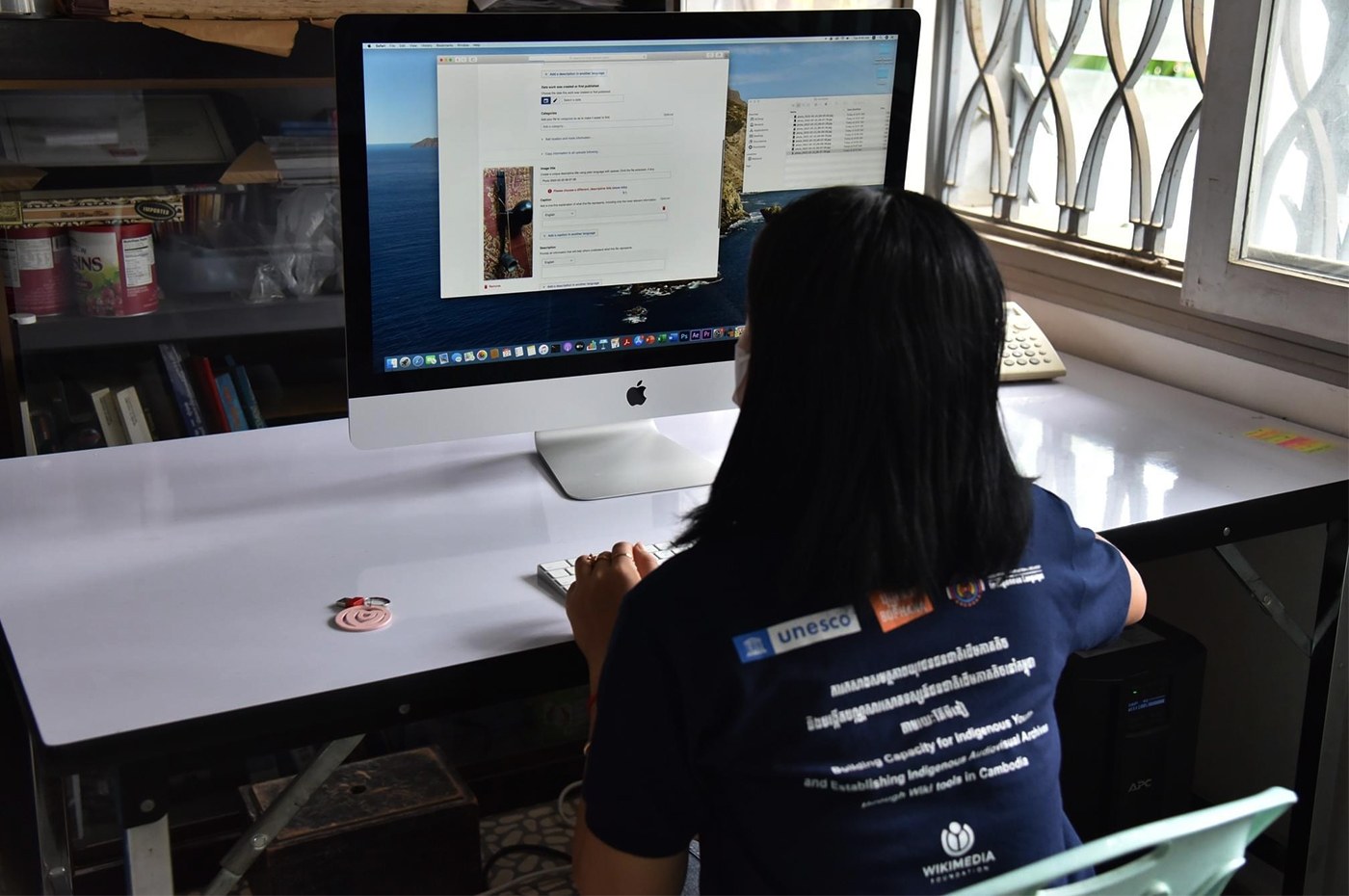
Chea Sopheap, executive director of Bophana Audiovisual Resource Center, told CamboJA that their programs are intended to train would-be indigenous filmmakers, who can then return home document key issues facing their communities — issues often overlooked by local and provincial officials. He said the center intends to screen the student films and invite relevant officials in the hopes that they can begin a discussion on how to find solutions to issues facing indigenous communities.
“Some policies may already be in place, but implementation has not yet been deep, so this production is an additional motivator to show what is happening,” Sopheap said.
“Our team understands that it means a lot that we give them knowledge and skills and direct them to work for the community where they will become the owner of their work.”
But the outreach effort itself has faced challenges. An earlier iteration of the program took place in Phnom Penh, making it difficult to find enough indigenous women attendees willing to travel so far. After having to select Khmer students, as well as men, for the program, Sopheap said they decided to move the next projects to Ratanakiri or other provinces where indigenous youth live.
The difficulties non-Indgenous students have faced documenting sensitive issues highlights the benefits of training those directly from the community.
Phok Rany, a 30-year-old Khmer student from Banlung in Ratanakiri province, studied film making at Bophana through an earlier version of the program.
Her third film was a documentary about a Tumpuon family where the parents got married at 16 years old.
“We had some difficulties. Some indigenous people were ashamed and they did not want to share their family story to others, but some of them cooperated after I explained [about the film],” she said, adding that the film was aimed to dissuade viewers from marrying so young.
“We wanted their children not to follow them because this young marriage caused many challenges and dangers in their life.”
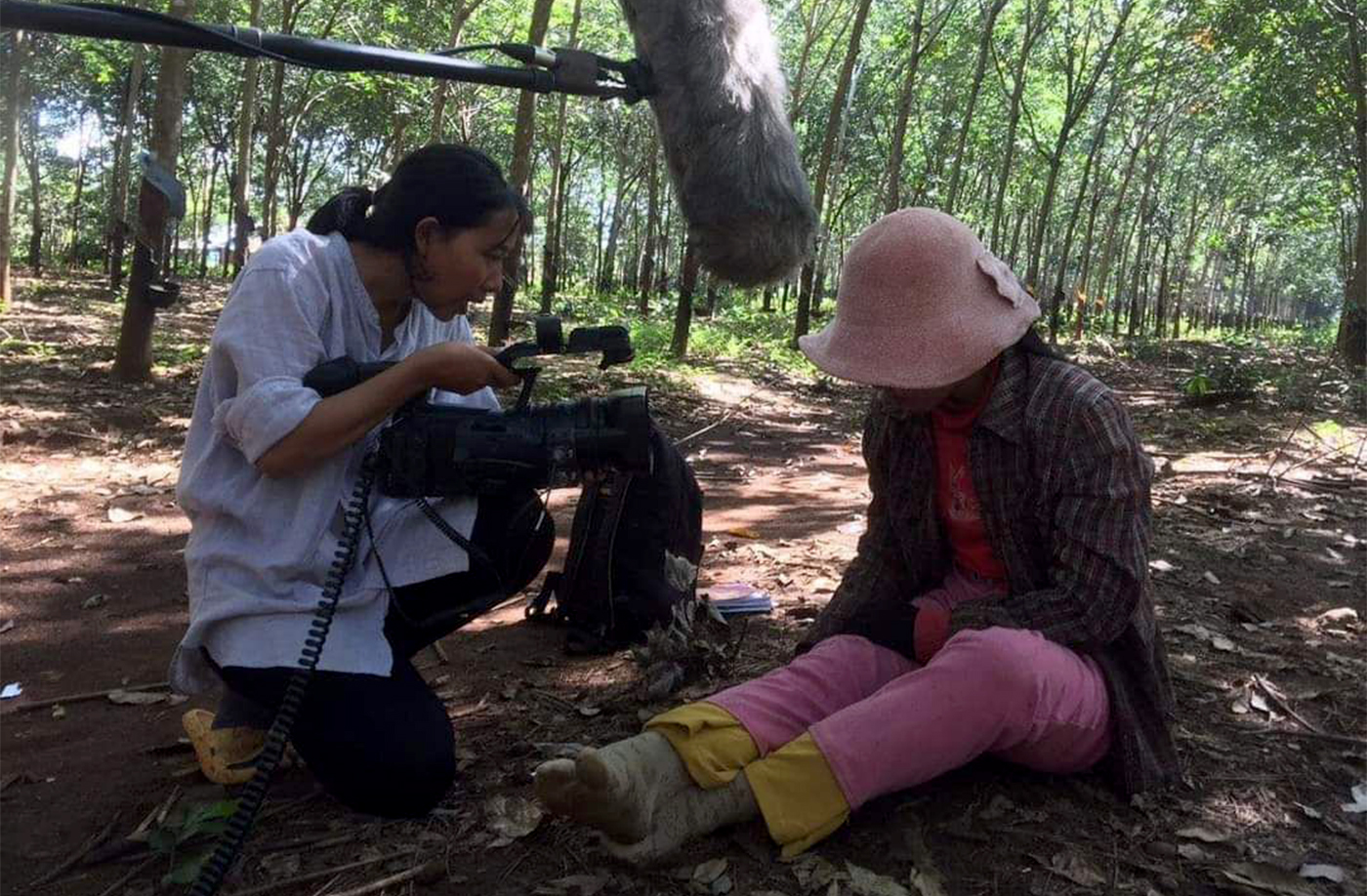
Indigenous minorities face a slew of pressing issues related to land loss, the erasure of cultural identity, and discrimination, said Choeurn Srey Mom, President of the Cambodian Indigenous Woman Association. Women, meanwhile, face particular challenges including abuse, gender discrimination, and lower rates of education and participation in family and community affairs.
The film training and subsequent projects, said Srey Mom, are an excellent way to address some of these challenges.
“It is consistent with the current situation in which the majority of people rely on technology to access information in society. And it is a way to disseminate information about indigenous people in order to eliminate discrimination against them,” she said.
Executive director of Cambodian Indigenous People Organization, Yun Mane, said the films serve to both highlight what women can accomplish, and shed light on pressing issues facing indigenous communities.
“Indigenous peoples need to widely disseminate information related to their living conditions, traditions and customs so that our [Khmer] society can better understand about indigenous peoples in order to avoid wrong understanding about the culture and identity of the indigenous people,” she said.
Social media, messaging apps, and email are critical tools to spreading awareness — but only if users understand how to access them. Vireak Rithy, program manager of the Cambodian Indigenous Youth Association, told CamboJA that he has organized a range of training sessions both online and in person, showing how to use apps like Telegram, how to troubleshoot technology issues, and how to record information.
“In indigenous communities, we have many problems such as drugs, [a lack of] education and livelihood, and rape,” Rithy said. “Therefore, they [indigenous youth] can use their civil rights to share and spread awareness of the risks… so that other youth can understand all these issues and participate in preventing and protecting them together.”
Socheata, the filmmaker, said that she intends to continue filming once the program ends in June and will not shy away from sensitive issues such as land disputes.
“I would still be willing to film. I would talk to the relevant people and the authorities about this issue and request to shoot to reflect the consequences of the land issue,” she said.


